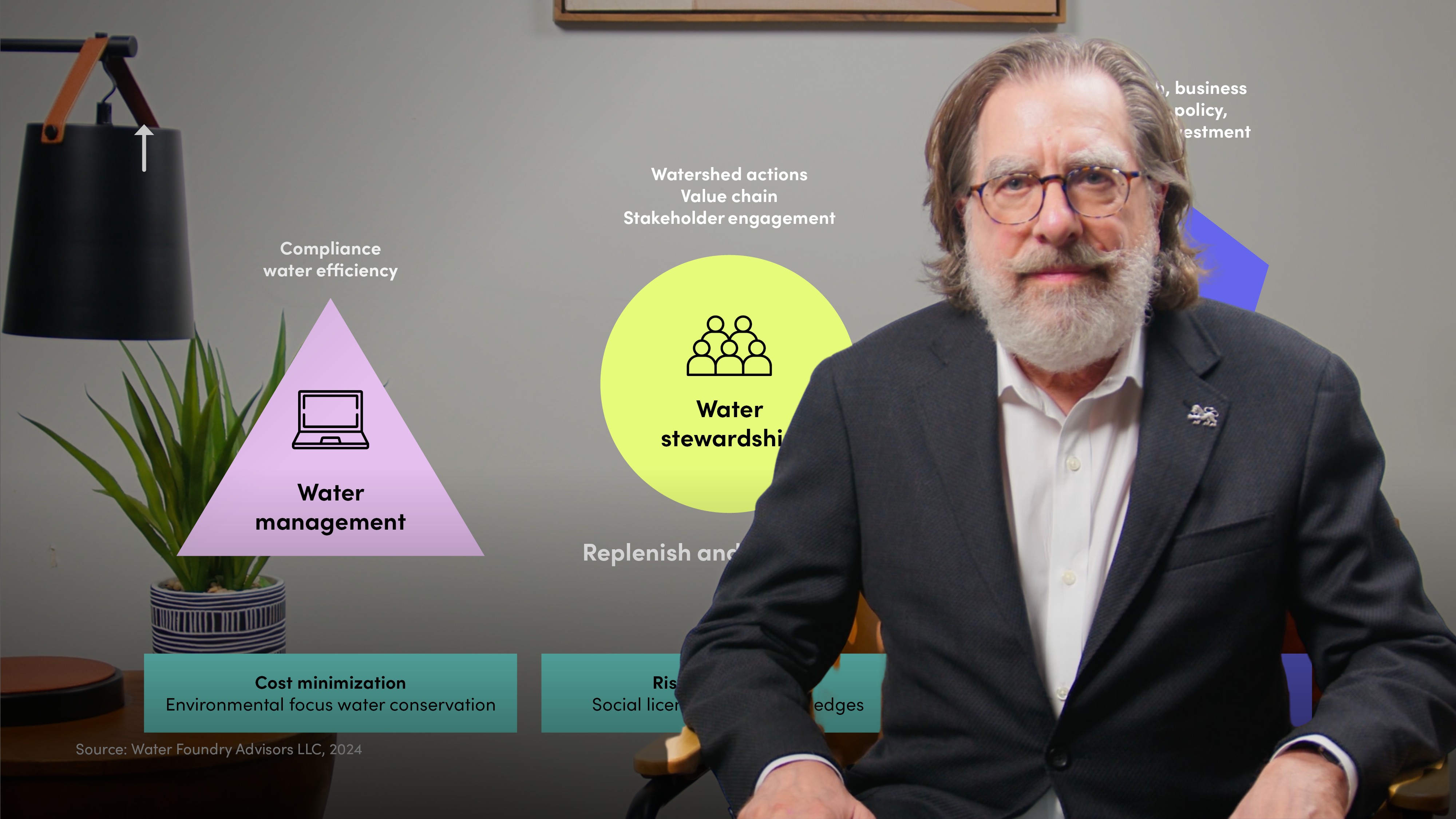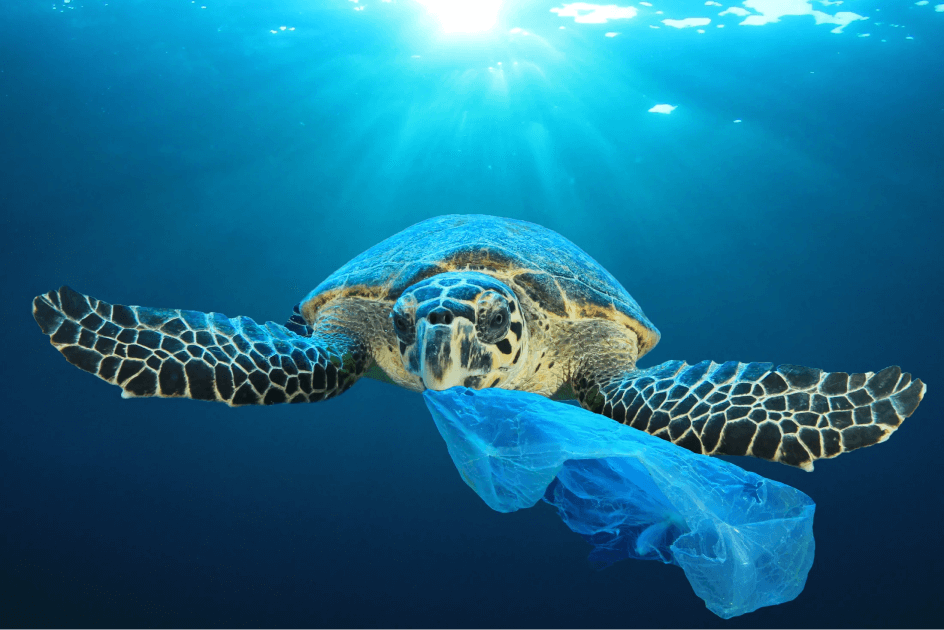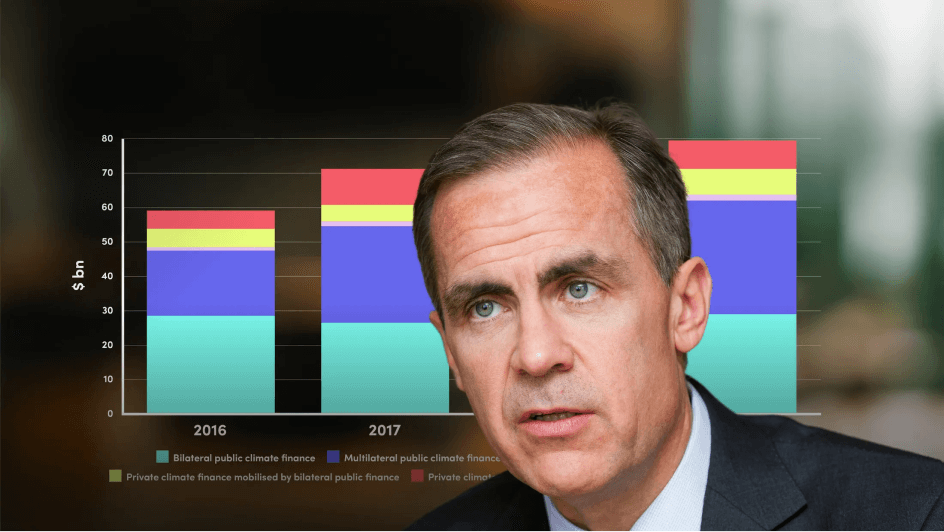
Setting a Corporate Water Strategy

Will Sarni
Leader: Corporate water strategy
How can corporations help? Join Will Sarni and explore corporate water strategies can tackle global water challenges, reduce business risk and unlock long-term value.
How can corporations help? Join Will Sarni and explore corporate water strategies can tackle global water challenges, reduce business risk and unlock long-term value.
Subscribe to watch
Access this and all of the content on our platform by signing up for a 7-day free trial.

Setting a Corporate Water Strategy
11 mins 18 secs
Key learning objectives:
Understand the role of corporations in addressing water challenges
Outline water stewardship frameworks
Identify water stewardship case studies
Overview:
Subscribe to watch
Access this and all of the content on our platform by signing up for a 7-day free trial.
- Physical risk: ensuring they have enough water of the right quality for operations
- Reputational risk: public perception and scrutiny, especially in the age of social media
- Regulatory risk: current and emerging regulations that may affect both water quality and availability
Subscribe to watch
Access this and all of the content on our platform by signing up for a 7-day free trial.

Will Sarni
There are no available Videos from "Will Sarni"





























